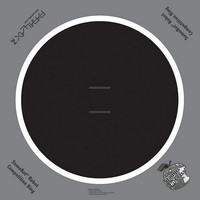27404 Parallax Inc, 27404 Datasheet - Page 7

27404
Manufacturer Part Number
27404
Description
COMPETITION RING FOR SUMOBOT
Manufacturer
Parallax Inc
Datasheet
1.27404.pdf
(266 pages)
Specifications of 27404
Accessory Type
Hobby and Education
Product
Microcontroller Accessories
Lead Free Status / RoHS Status
Contains lead / RoHS non-compliant
For Use With/related Products
SumoBot®
Lead Free Status / RoHS Status
Lead free / RoHS Compliant, Contains lead / RoHS non-compliant
- Current page: 7 of 266
- Download datasheet (6Mb)
Preface · Page iii
Preface
INTRODUCTION
Robotics is currently enjoying ever increasing popularity with students. Especially when
it involves a contest or competition, enthusiasm runs high as participants put everything
they've got into their robots in hopes of winning top honors. With this in mind, Parallax
®
developed the SumoBot
Robot Competition Kit and SumoBot Competition Ring as an
inexpensive way for technology, programming, pre-engineering, and engineering classes
to hold their own robotics competitions.
This textbook guides students through a variety of electronics, programming and physics
activities as they prepare their SumoBot robots for SumoBot vs. SumoBot competition.
Each of the principles presented are of general value to robotics students, applied in such
a way as to add something to the SumoBot's competition performance.
Examples from electronics are mostly review from What's a Microcontroller and
Robotics with the Boe-Bot, the entry-level texts to the Stamps in Class series, and include
basics such as controlling LED indicators, speakers, and servos. Sensor basics include
digital devices like pushbuttons and infrared receivers as well as analog devices like the
QTI line sensors, which involve RC-decay measurements. More advanced electronic
topics such as frequency response and thresholds for RC-decay measurements are also
included.
Physics principles include introductions to time vs. distance at a constant velocity, force,
mass, acceleration, coefficients of friction, and free body diagrams. While the physics
experiments are optional, they can give students a new view to the direct benefit of
experimentation to mechanical designs.
The programming topics in this book include many of the basics, such as looping,
conditions, subroutines, saving variable space, using compiler directives, and adhering to
coding conventions for the sake of debugging and reusable code. Some unique robotics
and embedded systems topics are also included, such as sensor management, state
machine design, and datalogging to capture real-time sensor events and navigation states
for isolating robotic misbehaviors.
Related parts for 27404
Image
Part Number
Description
Manufacturer
Datasheet
Request
R

Part Number:
Description:
Microcontroller Modules & Accessories DISCONTINUED BY PARALLAX
Manufacturer:
Parallax Inc

Part Number:
Description:
BOOK UNDERSTANDING SIGNALS
Manufacturer:
Parallax Inc
Datasheet:

Part Number:
Description:
TEXT INFRARED REMOTE FOR BOE-BOT
Manufacturer:
Parallax Inc
Datasheet:

Part Number:
Description:
BOARD EXPERIMENT+LCD NX-1000
Manufacturer:
Parallax Inc
Datasheet:

Part Number:
Description:
CONTROLLER 16SERVO MOTOR CONTROL
Manufacturer:
Parallax Inc
Datasheet:

Part Number:
Description:
BASIC STAMP LOGIC ANALYZER
Manufacturer:
Parallax Inc
Datasheet:

Part Number:
Description:
IC MCU 2K FLASH 50MHZ SO-18
Manufacturer:
Parallax Inc
Datasheet:

Part Number:
Description:
IC MCU 2K FLASH 50MHZ 28SSOP
Manufacturer:
Parallax Inc
Datasheet:














